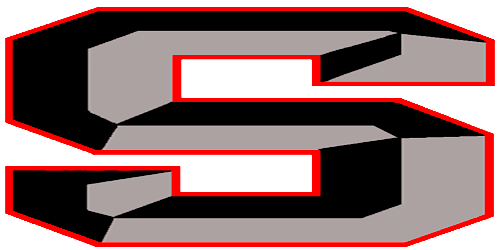Charles Quidland "Punque" Cartledge

October 13th, 1893-November 12th, 1978
The man that put Big Red on the map.Charles Quidland "Punque" Cartledge, the man who was a loved and respected legend when he coached Steubenville High School football teams to local, state, and national fame, died at 8:00 p.m., Sunday, November 12th, 1978 in Ohio Valley Hospital. He had resided at 1524 Maryland Avenue in Steubenville. Mr. Cartledge first started coaching football at Steubenville High in 1916, 4 years after he graduated from the school and when he finished in 1940, his teams had won 133 games, lost 39, and tied 9. He produced 7 undefeated teams and 3 others teams lost only 1 game. His 1925, 1926, 1930, 1931, and 1935 teams were state champions and several others were ranked among the top 3 in the days when state championships were governed by popular acclaim. During Mr. Cartledge's long tenure at Big Red, he was called a phenomenon, one of a kind, a man ahead of his time. He was noted as a fierey taskmaster with a soft heart, a tactician, disciplinarian, psychologist and known for his inventiveness. Mr. Cartledge was a profound practitioner of football arts and his style was copied by many high school and college coaches. Among those who came to see Steubenville play were coaches from Ohio State, the University of Pittsburgh, West Virginia and many others. One of these was a young man getting his start in the coaching profession at Massillon, Paul Brown. Brown has said many times that some football he learned from Punque helped him build a dynasty at Massillon. Cartledge made frequent use of the forward pass out of a T-formation and old Notre Dame short punt formations and his teams were known for their execution, timing, and team play. He was a hard loser, but never lost his temper. He gave his athletes "lessons in living" and many former players and coaches will say "they threw away the mold". His top competition in the 30's came from Dayton Stivers, Cleveland Cathedral Latin, Canton McKinley, Youngstown South, Youngstown Rayen, and schools from Pittsburgh and Columbus. In 1931, Big Red defeated Massillon, 68-0, and that score ranks as the worst defeat ever inflicted on a Massillon team. Big Red also defeated Massillon in 1930, 19-0.
|
The Flying Dutchman recounts stories of Coach Cartledge from the Steubenville Herald-Star.Over one-hundred years of gridiron glory. Over six-hundred all-time victories vs some of this states - and points beyond - most powerful and feared high school aggregations, and backed by some of the most loyal and passionate fans on the planet, the mighty-mighty Big Red of Steubenville High has left its imprint from one end of the buckeye state to the other - early and often! Little difference was made to the throngs of fans where their beloved "Stubbers" would engage the enemy, traveling at times hundreds of miles to root, root, root their boys on to victory. In 1927, over 2,000 love-sick die-hards made the long treck to western Ohio to give their full support to coach Punque Cartledge and his famous rough house warriors when they traveled all the way to Dayton by auto, rail and even air for a huge show-down with the large, Orange Crush, juggernaut from Stivers High. |
FIVE-STRAIGHT undefeated teams from 1922-1926 to 45 of some of Ohio and Pennsylvania's best scholastic grid teams of that era,(One loss in 1924 to Carnegie College Freshmen). TWO-TIME state champions (1925&1926). A grand total of 1,295 points scored for the Big Red as opposed to only 98 for the enemy. 35 shut-outs out of 46 games. |
The press spelled it "Punque." The school yearbook spelled it "Punke" but the school paper spelled it "Punk." Either way it all spelled the same thing when they were talking about one of the all-time greatest high school athletic coaches in the state of Ohio...and points beyond. |
By 1929 his "boys" and he had produced five powerful and undeafeated football teams in, 1922,23,24,25,26 and garnered two state titles while battling some of the most feared grid outfits of the time. His basketball teams had won 107 games out of the 182 played and, his diamond nines had won 37 while lossing only 13 in five seasons! With the high school season now upon us, Coach Cartledge, in 1926 talked about what type of youngsters would show up for the pre-season drills for old Steubenville High. Who was by now the center of the scholastic football world in the state of Ohio. The words of Cartledge so long ago could still echo true to today. |
At the conclusion of another sensational football campaign, going undefeated (9-0-0) and outscoring the conquered foe, 365-18, and gaining the schools second consecutive "big school" classification state of Ohio football championship, Steubenville football coach, C.Q. "Punque" Cartledge sat down in his small office and with pen in hand reflected on some of the highlights of the just completed gridiron season. In this particular article we see Cartledge, softly, take a jab at some of the Big Reds most enthusiastic fans which he light-heartedly labels as, "those well meaning people!" |


